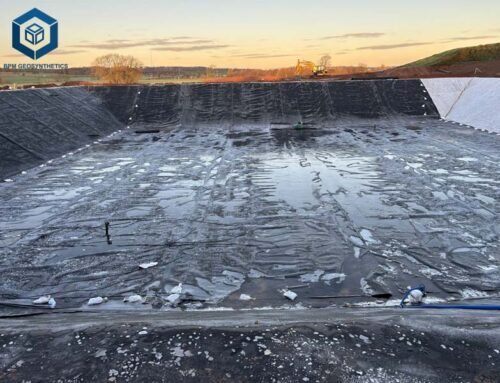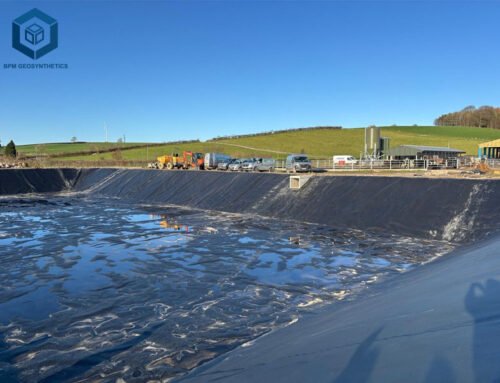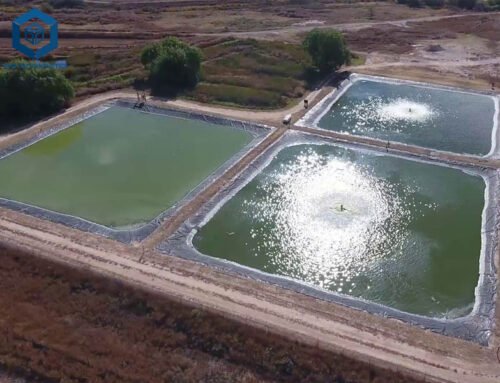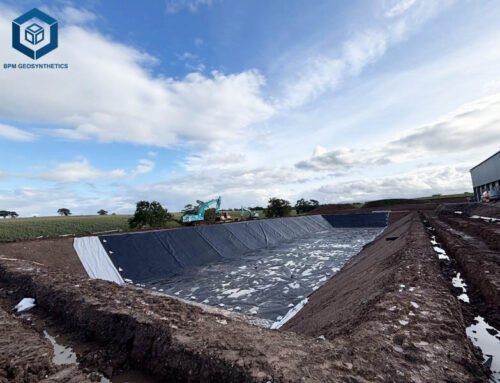The global aquaculture industry, valued at USD 289 billion in 2024, is projected to reach USD 421 billion by 2032, growing at a 4.8% CAGR. Fish farming, a key driver of this growth, depends on robust water containment systems, with fish pond liners being essential for maintaining water levels, ensuring fish health, and protecting the environment. Whether you’re constructing a small koi pond for your backyard or a large-scale commercial fish farm, understanding Fish Pond Liner Cost is critical. Prices vary widely, from $0.30 per square foot for budget options to over $3.00 for premium, eco-friendly liners.
This blog post delivers an in-depth analysis of fish pond liner costs, materials, specifications, installation, and market trends for 2025. It provides detailed, data-driven insights to help homeowners, aquaculture farmers, and project managers make informed decisions. We explore pricing dynamics, technical parameters, and practical considerations to ensure your pond project balances cost, performance, and longevity.
1. What Is a Fish Pond Liner?
A fish pond liner is an impermeable barrier, typically made from synthetic polymers or natural materials, designed to prevent water seepage in ponds. Unlike traditional earthen ponds, which can lose 30–50% of water to soil absorption, liners achieve 98% water retention. They safeguard fish health by blocking soil contaminants, reduce disease risks by 20–30%, and boost fish yields by 15–25% through improved water quality. Liners are used in applications ranging from small decorative ponds (50–500 square feet) to large aquaculture farms (1,000–100,000 square meters).
Key Functions
- Water Retention: Prevents up to 50,000 liters of daily water loss in a 1-hectare pond.
- Environmental Protection: Blocks heavy metals and acid-sulfate soils, improving fish survival by 10–15%.
- Disease Prevention: Reduces bacterial contamination by 90%, minimizing antibiotic use.
- Maintenance Efficiency: Simplifies cleaning and waste removal, cutting labor costs by 20–30%.
Fish pond liners come in various materials, including high-density polyethylene (HDPE), ethylene propylene diene monomer (EPDM), polyvinyl chloride (PVC), reinforced polyethylene (RPE), and bentonite clay. Each offers unique cost, durability, and performance characteristics, catering to diverse project needs.
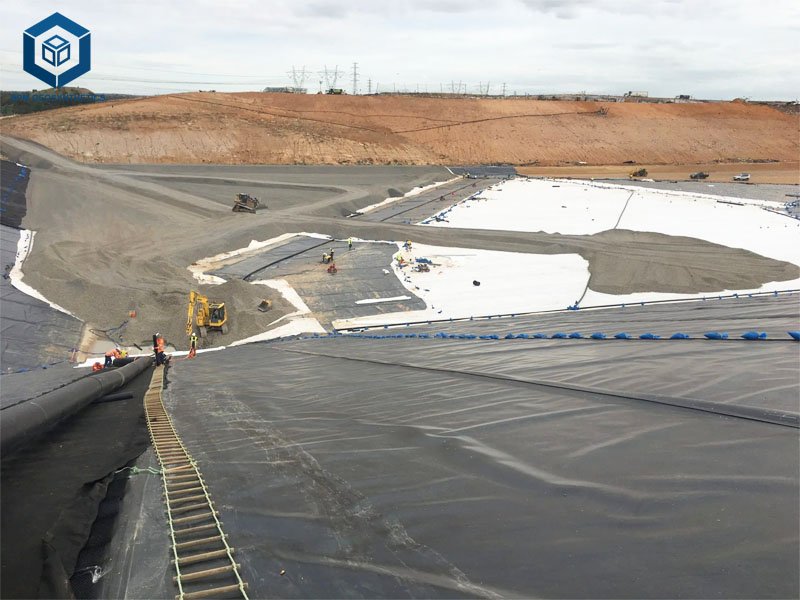
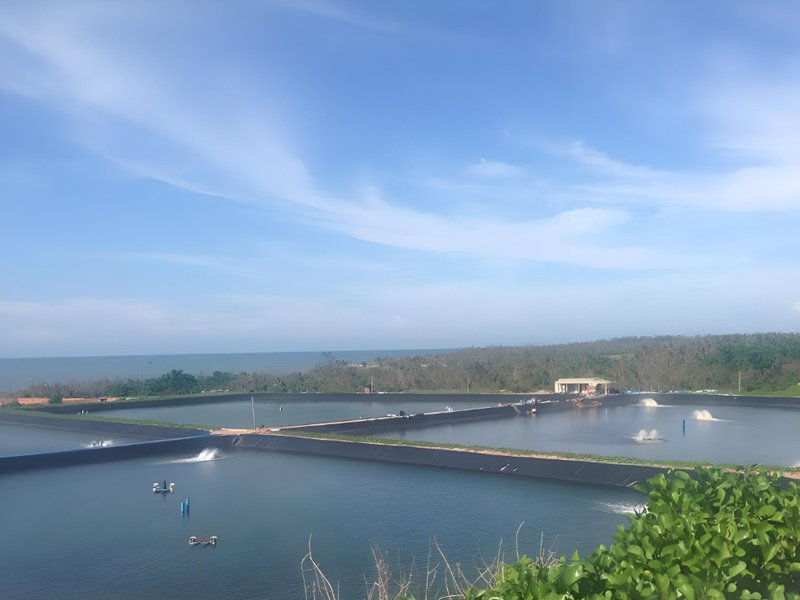
2. Types of Fish Pond Liners
Fish pond liners differ in material composition, thickness, and suitability for specific applications. Below is a detailed overview of the primary types, their features, and price ranges for 2025.
2.1 High-Density Polyethylene (HDPE) Liners
- Primary Use: Commercial fish farms, large aquaculture ponds
- Features: Non-toxic, UV-resistant, 20–30-year lifespan, 0.5–1.5 mm thickness
- Price Range: $0.50–$1.50 per square foot
- Example: HDPE liner, 640 N puncture resistance, fish-safe
- Market Share: 50% of aquaculture liners due to durability and affordability
2.2 Ethylene Propylene Diene Monomer (EPDM) Liners
- Primary Use: Backyard koi ponds, decorative water gardens
- Features: Flexible, fish-safe, UV-resistant, 0.75–1.5 mm thickness
- Price Range: $0.75–$2.00 per square foot
- Example: EPDM liner, 15-year warranty, high elasticity
- Market Share: 25% of residential liners, valued for flexibility
2.3 Polyvinyl Chloride (PVC) Liners
- Primary Use: Small, budget-friendly ponds
- Features: Lightweight, flexible, 0.3–1.0 mm thickness, 5–10-year lifespan
- Price Range: $0.30–$0.90 per square foot
- Example: 20 mil PVC liner, fish-safe, easy to install
- Market Share: 15% of liners, popular for low-cost projects
2.4 Reinforced Polyethylene (RPE) Liners
- Primary Use: Medium to large ponds, commercial farms
- Features: Lightweight, high puncture resistance (700 N), 0.5–1.0 mm thickness
- Price Range: $0.40–$1.00 per square foot
- Example: 30 mil RPE liner, 7-year UV resistance, durable weave
- Market Share: 7% of liners, gaining traction for cost-effectiveness
2.5 Bentonite Clay Liners
- Primary Use: Eco-friendly, large-scale ponds
- Features: Natural, self-healing, 2–5 lbs/sq.ft. application
- Price Range: $0.50–$3.00 per square foot
- Example: Bentonite clay liner, 20-year lifespan, eco-compliant
- Market Share: 3% of liners, limited by installation complexity
3. Fish Pond Liner Cost Range Breakdown
| Price Bracket | Description | Ideal For |
| $0.30–$0.75/sq.ft. | Thin PVC or HDPE liners, 5–10-year lifespan | Small backyard ponds, budget projects |
| $0.75–$1.50/sq.ft. | Mid-range HDPE, EPDM, or RPE, 10–20-year lifespan | Medium-sized fish farms, koi ponds |
| $1.50–$3.00/sq.ft. | Premium HDPE, EPDM, or bentonite clay, 20–30-year lifespan | Commercial aquaculture, eco-friendly ponds |
| $3.00+/sq.ft. | Custom-fabricated or ultra-thick liners | Large-scale farms, high-risk terrains |
- Market Insight: 65% of fish pond liners cost under $1.50/sq.ft., with HDPE leading due to its balance of cost and durability.
- Installation Costs: Add $0.50–$2.00/sq.ft. for labor, depending on site complexity.
- Bulk Discounts: Orders exceeding 10,000 sq.ft. reduce material costs by 15–25%.
4. Key Factors Influencing Fish Pond Liner Cost
Several variables determine the cost of fish pond liners, from material quality to installation requirements. Below is a comprehensive analysis for 2025.
4.1 Fish Pond Liner Cost – Material Type and Quality
- Virgin vs. Recycled Resins: Virgin HDPE liners cost 20–30% more but last 40–60 years, compared to 5–15 years for recycled resins.
- Certifications: Fish-safe liners with ISO 9001 or GRI-GM13 standards add $0.10–$0.30/sq.ft. for compliance assurance.
- Market Trend: 80% of aquaculture liners use virgin HDPE for 95% fish safety.
4.2 Fish Pond Liner Cost – Thickness
- Range: 0.3–3.0 mm; 0.5–1.0 mm is standard for most fish ponds.
- Cost Impact: Each 0.5 mm increase adds $0.20–$0.40/sq.ft. due to higher material volume.
- Example: A 1.0 mm HDPE liner ($0.75/sq.ft.) offers double the durability of a 0.5 mm liner ($0.50/sq.ft.).
4.3 Fish Pond Liner Cost – Pond Size and Shape
- Calculation: Liner size = [Length + (2 × Depth + 5′)] × [Width + (2 × Depth + 5′)].
- Cost Impact: Larger ponds (10,000+ sq.ft.) lower per-square-foot costs by 10–20% via economies of scale.
- Custom Shapes: Irregular or curved ponds increase costs by 15–25% due to fabrication needs.
4.4 Fish Pond Liner Cost – Site Conditions
- Soil Type: Rocky or sandy soils require underlayments ($0.10–$0.30/sq.ft.) or thicker liners, adding 10–20%.
- Slope and Depth: Ponds with slopes over 3:1 or depths exceeding 6 ft. need 1.0–1.5 mm liners, raising costs by $0.20–$0.50/sq.ft.
- Preparation: Site clearing and grading add $500–$2,000 per project.
4.5 Fish Pond Liner Cost – Installation Method
- DIY vs. Professional: DIY installation saves $0.50–$1.00/sq.ft. but increases failure risks by 30%.
- Seaming: Heat-welded seams (13 kN/m strength) cost $0.30–$0.60/sq.ft. more than adhesive seams.
- Market Trend: 70% of commercial projects hire professionals for 95% seam reliability.
4.6 Fish Pond Liner Cost – Shipping and Logistics
- Cost Impact: Shipping adds $0.05–$0.15/sq.ft. for large rolls (3–8 m wide, 100–140 m long).
- Regional Variations: Costs in North America and Europe are 10–15% higher than in Asia due to shipping distances.
- Example: Shipping a 10,000 sq.ft. liner costs $500–$1,500.
4.7 Fish Pond Liner Cost – Sustainability Features
- UV Resistance: Liners with UV stabilizers (90% retention after 1,500 hours) add $0.10–$0.20/sq.ft.
- Recycled Content: 20% recycled HDPE liners reduce costs by 5–10% but may shorten lifespan by 10–15%.
- Market Demand: 60% of buyers prioritize non-toxic, fish-safe liners.
5. Material Specifications and Performance Parameters
| Parameter | Specification | Cost Impact |
| Thickness | 0.3–3.0 mm | +$0.20–$0.40 per 0.5 mm |
| Tensile Strength | 27–40 kN/m | +$0.10–$0.30/sq.ft. |
| Puncture Resistance | 640–1,200 N | +$0.15–$0.40/sq.ft. |
| UV Resistance | 90% retention after 1,500 hours | +$0.10–$0.20/sq.ft. |
| Permeability | 10,000–20,000 mm waterproof rating | +$0.20–$0.50/sq.ft. |
- Tensile Strength: HDPE liners (27 kN/m) resist 20% more stress than PVC (15 kN/m).
- Puncture Resistance: RPE liners (700 N) provide 30% better protection than EPDM (500 N).
- Lifespan: HDPE lasts 20–30 years, compared to 5–10 years for PVC.
- Weight: Lightweight RPE (0.5 kg/m²) reduces shipping costs by 15% vs. HDPE (0.8 kg/m²).
6. Fish Pond Liner Cost – Installation and Considerations
Installation represents 30–50% of total project costs, ranging from $0.50–$2.00/sq.ft. Key steps include:
6.1 Fish Pond Liner Cost – Site Preparation
- Cost: $500–$2,000 for clearing, grading, and removing sharp objects.
- Underlayment: Non-woven geotextile ($0.10–$0.30/sq.ft.) prevents 90% of punctures.
- Time: 1–3 days for small ponds, 5–10 days for large farms.
6.2 Fish Pond Liner Cost – Liner Deployment
- Method: Unroll and align liners, avoiding wrinkles that increase failure risk by 30%.
- Seaming: Heat welding (95% seam strength) costs $0.30–$0.60/sq.ft. vs. adhesive ($0.10–$0.20/sq.ft.).
- Labor: Skilled crews charge $1,000–$3,000 for 10,000 sq.ft.
6.3 Fish Pond Liner Cost – Post-Installation
- Anchoring: Trenches with 5 ft. overlap add $0.05–$0.15/sq.ft.
- Testing: Leak detection tests cost $200–$500, ensuring 98% integrity.
- Market Trend: 80% of commercial projects use heat-welded HDPE for 20–30-year reliability.
7. Maintenance and Lifetime Costs
Maintenance costs average $200–$500 annually for a 10,000 sq.ft. pond. Key considerations include:
- Cleaning: Sludge removal reduces disease risks by 25%, costing $100–$300/year.
- Repairs: Patching punctures costs $50–$200 per incident.
- Lifespan: HDPE liners (20–30 years) save 50% on replacement costs compared to PVC (5–10 years).
- Market Insight: 70% of farmers choose low-maintenance HDPE liners.
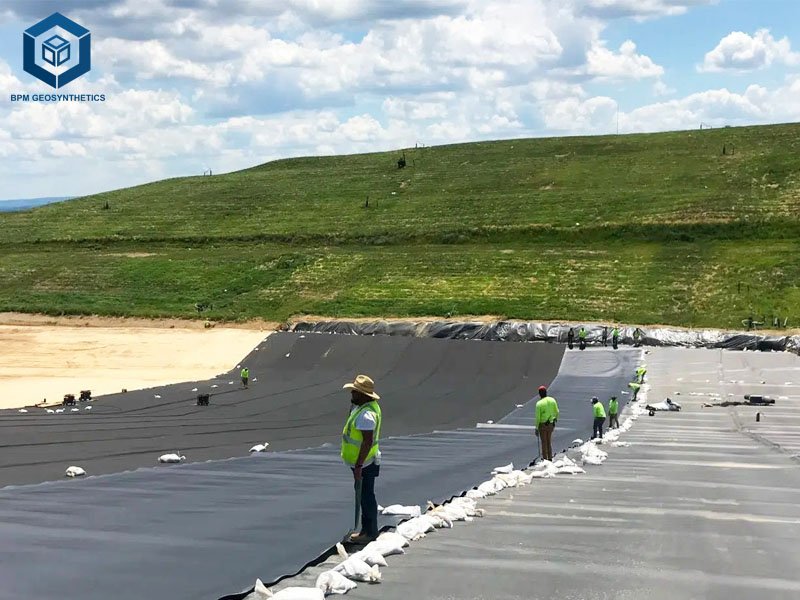
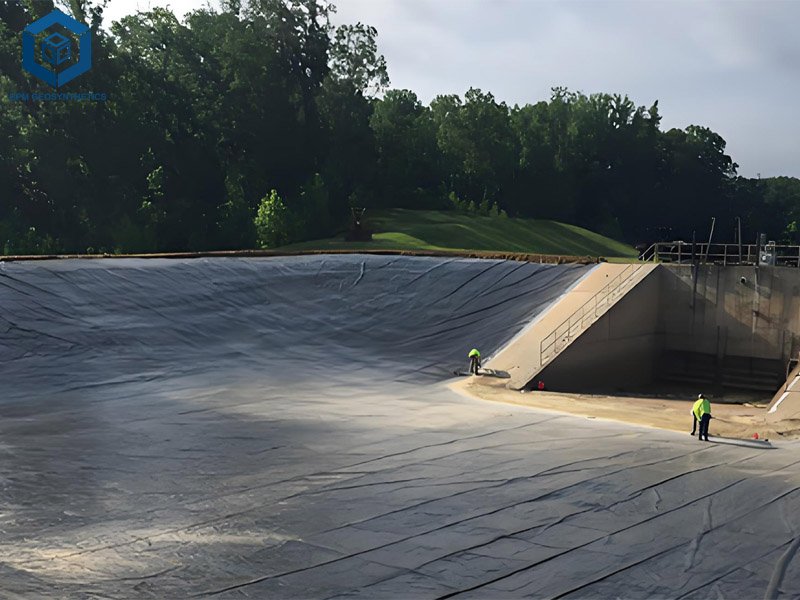
8. How to Choose the Right Fish Pond Liner
8.1 Budget Under $0.75/sq.ft.
- Use: Small backyard ponds
- Recommendation: 20 mil PVC ($0.65/sq.ft.), 0.5 mm HDPE ($0.50/sq.ft.)
- Pros: Affordable, 5–10-year lifespan
- Cons: Limited durability, unsuitable for deep ponds
8.2 Budget $0.75–$1.50/sq.ft.
- Use: Medium-sized fish farms, koi ponds
- Recommendation: 0.75 mm HDPE ($0.75/sq.ft.), 45 mil EPDM ($1.30/sq.ft.)
- Pros: 10–20-year lifespan, fish-safe
- Cons: Higher installation costs
8.3 Budget $1.50–$3.00/sq.ft.
- Use: Commercial aquaculture, eco-friendly ponds
- Recommendation: Bentonite clay ($1.50/sq.ft.), 1.5 mm HDPE ($1.20/sq.ft.)
- Pros: 20–30-year lifespan, high puncture resistance
- Cons: Complex installation
8.4 Key Considerations
- Pond Size: Use a liner calculator to ensure accurate sizing.
- Fish Safety: Select non-toxic, UV-resistant materials.
- Site Conditions: Rocky soils require thicker liners or underlayments.
- Longevity: Choose HDPE or RPE for projects exceeding 20 years.
9. Case Studies and Real-World Applications
9.1 Commercial Fish Farm
- Project: 30,000 m² pond using 0.75 mm HDPE liner
- Cost: $22,500 ($0.75/sq.ft.), including installation
- Outcome: 98% water retention, 20% yield increase, 30-year lifespan
- Insight: HDPE reduced maintenance costs by 25% compared to earthen ponds.
9.2 Residential Koi Pond
- Project: 200 sq.ft. pond using 45 mil EPDM liner
- Cost: $260 ($1.30/sq.ft.), DIY installation
- Outcome: 15-year lifespan, 100% fish-safe, low maintenance
- Insight: EPDM’s flexibility accommodated irregular pond shapes.
9.3 Eco-Friendly Aquaculture
- Project: 5,000 sq.ft. pond using bentonite clay liner
- Cost: $7,500 ($1.50/sq.ft.), professional installation
- Outcome: 20-year lifespan, zero environmental impact, self-healing
- Insight: Bentonite suited eco-conscious projects despite higher installation costs.
10. Recent Trends in Fish Pond Liners for 2025
- Sustainability: 60% of liners incorporate recycled HDPE, cutting costs by 5–10%.
- Thinner Liners: 0.3–0.5 mm HDPE liners gain 15% market share in budget-conscious regions.
- Automation: Automated welding machines reduce installation time by 20%, saving $0.10–$0.20/sq.ft.
- Smart Monitoring: IoT sensors for leak detection cost $500–$1,000 but prevent 90% of failures.
- Market Growth: Aquaculture liner demand grows 6% annually, driven by global fish farming expansion.
Sustainability Focus
- Recycled Materials: 20% recycled HDPE lowers environmental impact by 15%.
- Fish-Safe Certifications: 80% of liners meet non-toxic standards, boosting consumer trust.
- Eco-Friendly Options: Bentonite clay liners gain 5% market share for green projects.
Technological Advancements
- Automated Installation: Reduces labor costs by 15–20% for large projects.
- UV Stabilization: Extends liner lifespan by 10–15 years, adding $0.10/sq.ft.
- Leak Detection: Smart sensors improve reliability by 95%, ideal for commercial farms.
11. Conclusion
Fish pond liners, vital to the USD 289 billion aquaculture industry, range from $0.30 to over $3.00 per square foot, with HDPE holding 50% market share due to its 20–30-year lifespan and 98% water retention. Budget PVC liners ($0.30–$0.75/sq.ft.) suit small ponds, while premium HDPE or bentonite ($1.50–$3.00/sq.ft.) excel for commercial and eco-friendly applications. Costs are driven by material thickness (0.5–1.5 mm), pond size, site conditions, and installation (30–50% of total expenses), with bulk orders saving 15–25%. Trends like recycled materials, automated welding, and smart monitoring shape 2025’s market, emphasizing sustainability and efficiency. Whether building a 200 sq.ft. koi pond or a 30,000 m² fish farm, prioritize fish safety, durability, and long-term value to optimize your investment.
Any questions or inquiries, please contact BPM Geomembrane.


